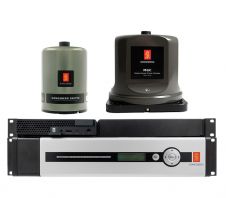GIS: Is the Hydrographic Industry Benefiting?
It is clear Geographical Information Systems (GIS) are providing added value business solutions in the wider geomatics world; this may be seen reading the many articles in the Geomatics Information Magazine, GIM International. So why is there such a slow uptake in many parts of the hydrographic world?
GIS can also play a fundamental role in the integration of different types of hydrographic data. Data can be brought together better in one common interface and thus provide support to improve the data management and decision-making process all through the life-cycle of data. So why are many of the specifications for hydrographic surveys still outlining very traditional survey deliverables? Looking at this from the top down, perhaps the reason lies in expertise and individuals originally responsible for survey specifications no longer existing in many organisations. Looking at it from the bottom up, perhaps survey contractors are reluctant to invest without clear guidance; additional training, software purchases and modification to current offshore work-flow processes would be required.
The situation is made more complicated by certain present contracting arrangements, where the end client contracts to a lead contractor who in turn subcontracts the survey work. In this situation the end client and survey contractor may be fully supportive of GIS deliverables but the intermediate lead contractor may lack both knowledge and/or technology to make use of such data. So that the survey contractor may receive an additional request to provide 'traditional' deliverables in a format that they are able to review.
Perhaps the best approach would be for interested parties representing the various niches of the hydrographic survey industry (clients to survey contractors) to collaborate through their trade associations/professional bodies to explore a way forward towards embracing the potential advantages of GIS technology.
The proven business drivers for GIS are improvements in decision making, data integration, data management, data access mapping and improved communication through visualisation.
By way of illustration, the Oil and Gas Exploration and Production industry relies heavily on having access to accurate, reliable and consistent datasets for all stages of the exploration and production life-cycle. The industry is dominated by specialised software applications designed for highly technical tasks; for example, seismic interpretation and engineering CAD packages. It is thus often difficult to combine disparate datasets for visualisation and analysis. In an industry where 80 per cent of the data has a spatial component, GIS provides an ideal tool to facilitate this. In its simplest form, a GIS is a map-based information system providing a means to model real-world objects through their geographical location, linked to underlying databases providing attribute information. Once populated, a GIS allows many forms of geographically related analysis to be seamlessly performed, such as:
- Location, Where is it..
- Condition, How is it..
- Trend, What has changed..
- Routing, Which is the best way..
- Pattern, What is the best pattern..
- Modelling, What if..
- Visual analysis, What does it look like..
Mapping via a GIS provides the possibility to combine hydrographic data with economic, commercial, geological and technological information to identify focus areas and business opportunities. GIS may be used throughout the process of developing a particular field or installation.
The future challenge for many areas of the hydrographic industry is how to tap into the compelling benefits of GIS technology and not be left behind by their fellow geomatics counterparts onshore.

Value staying current with hydrography?
Stay on the map with our expertly curated newsletters.
We provide educational insights, industry updates, and inspiring stories from the world of hydrography to help you learn, grow, and navigate your field with confidence. Don't miss out - subscribe today and ensure you're always informed, educated, and inspired by the latest in hydrographic technology and research.
Choose your newsletter(s)
























